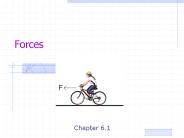Forces - PowerPoint PPT Presentation
Title: Forces
1
Forces
2
Types of Bonds
3
Intramolecular Bonding
- Intra Molecular Bonding ________
- __________ - metal non metal
- __________ - non metal non metal
- __________ - metal metal
4
Intermolecular
- Intermolecular bonds Bonding __________
- Network Covalent bonding
- Ionic bonding
- Metallic bonding
- Hydrogen bonding
- Dipole Dipole bonding
- London Dispersion forces
5
Network Covalent
- Continuous network of covalent bonds
- Examples quarts, diamond, graphite, SiO2
- Extremely __________ melting points
- Generally __________ in all solvents
- __________ conductors of electricity
6
Ionic
- Strong bonds due to __________ forces
- __________ melting points
- Good conductors of electricity when __________ or
in __________ - Usually soluble in __________ or __________
solvents
7
Metallic
- __________ of valence electrons
- __________ melting points
- Electrons free to move around
- __________ conductor of electricity
8
Hydrogen bonding
- Occurs when H is bonded to _____, _____, or _____
- They are VERY strong leading to
- High boiling points
- Viscous
9
Polarity
- In order for a substance to be polar, the bonds
within the molecule must carry different charges
and cannot cancel out due to symmetry
10
Polar or non polar
- CHF3
- CO2
- BCl3
- CH4
- H2O
11
Rule for solubility
- __________ dissolves __________
- Polar will dissolve in polar
- Non polar will dissolve in non polar
12
Van der Waals Forces
- Dipole Dipole
- Dipole - partial __________ a partial
__________ charges at one end - The partial positive and partial negative will
__________ - These attractions are called dipole - dipole
attractions - These come from polar molecules ONLY!!!
13
London Dispersion forces
- Small electrostatic forces caused by the
__________ of the electron in molecules - In all molecules
- More electrons ? stronger LDF because more
polarizable
14
What type of intermolecular forces are present?
- Ar
- HCl
- HF
- CaCl2
- CH4
- CO
- NaNO3
15
Which will have the
- Highest boiling point HBr, Kr, Cl2
- Highest freezing pointH2O, NaCl, HF
- Lowest freezing pointN2, CO, CO2
- Lowest boiling pointCH4, CH3CH3, CH3CH2CH3
- Highest boiling pointHF, HCl, HBr
16
More examples
- At 25?C ONF is a gas where H2O is a liquid. Why?
- At 25?C Br2 is a liquid when Cl2 is a liquid. Why?































